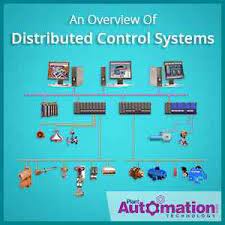Control systems play a vital role in various aspects of our lives, from regulating the temperature in our homes to managing the complex processes in industrial settings. As technology continues to advance, the need for innovative and efficient control systems has become increasingly important. This article explores the process of designing and engineering new control systems, highlighting the key steps and considerations involved.
- Define the Purpose and Requirements
The first step in designing a new control system is to clearly define its purpose and the requirements it must meet. This involves understanding the problem you aim to solve, the environment in which the system will operate, and the desired outcomes. It's crucial to gather input from all stakeholders to ensure that everyone's needs and expectations are considered.
- System Analysis
Once you have a clear understanding of the system's purpose and requirements, the next step is to perform a comprehensive system analysis. This involves evaluating the existing infrastructure, identifying potential limitations, and conducting a feasibility study. The analysis should also consider factors such as safety, reliability, and cost-effectiveness.
- Choose the Control Strategy
Selecting the appropriate control strategy is a critical decision in the design process. The control strategy determines how the system will operate and respond to various inputs and disturbances. Common control strategies include open-loop, closed-loop (feedback), and adaptive control. The choice of strategy depends on the specific requirements and the nature of the system.
- Sensors and Actuators Selection
Sensors and actuators are essential components of any control system. Sensors gather data from the system's environment, while actuators execute the control actions. The selection of appropriate sensors and actuators depends on the type of data to be collected and the control actions required. Consider factors such as accuracy, response time, and environmental conditions.
- Controller Design
The controller is the brain of the control system, responsible for processing sensor data and generating control signals for the actuators. The design of the controller depends on the chosen control strategy and can range from simple PID (Proportional-Integral-Derivative) controllers to more complex algorithms involving artificial intelligence and machine learning.
- Hardware and Software Integration
Integrating the hardware and software components of the control system is a critical step. It involves selecting the appropriate computing platform, communication protocols, and programming languages. Modern control systems often incorporate microcontrollers, PLCs (Programmable Logic Controllers), and software-based control algorithms to achieve the desired functionality.
- Simulation and Testing
Before implementing the control system in a real-world environment, it's essential to simulate and test its performance. Simulation allows for the identification of potential issues and fine-tuning of control parameters without risking damage to the system or its surroundings. Testing should encompass a wide range of scenarios and edge cases.
- Implementation and Installation
Once the control system has been thoroughly tested and optimized, it can be implemented in the target environment. The installation process involves physically connecting the sensors, actuators, and controller to the system, ensuring that everything is properly calibrated and configured.
- Monitoring and Maintenance
After deployment, continuous monitoring and maintenance are essential to ensure the control system's long-term performance. Regular checks, software updates, and calibration are necessary to address any drift or degradation in system performance.
Conclusion
Designing and engineering new control systems is a complex and multidisciplinary process that requires a deep understanding of the system's purpose, the use of suitable hardware and software components, and rigorous testing and maintenance. Whether for home automation, industrial processes, or any other application, well-designed control systems have the potential to enhance efficiency, safety, and overall performance. As technology advances, control systems will continue to play a pivotal role in shaping the world around us.


No comments yet